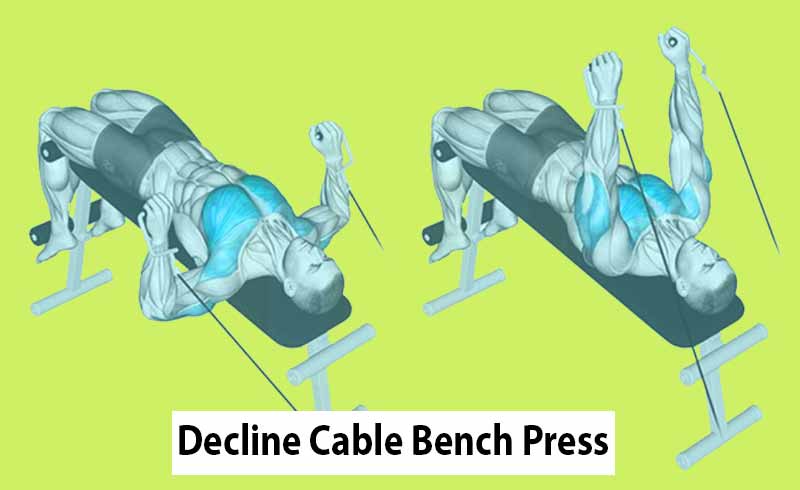The Decline Cable Bench Press is a modified variation of the classic bench press that takes your upper body workout to the next level.
By lying on a decline bench and employing cable machines, you’re able to concentrate on the lower pectoral muscles instead of the upper chest.
This exercise does more than simply activate your chest, it also targets your triceps and front deltoids, resulting in a well-rounded upper body development.
Decline Cable Bench Press Muscles Worked
The decline bench cable press targets the following muscle groups:
- Lower Pectoral Muscles: The declined angle places greater emphasis on the lower part of your chest, enhancing its definition.
- Triceps: The pressing motion heavily engages the triceps muscles, contributing to overall arm strength.
- Front Deltoids: As you push the handles away, your front deltoids get activated, leading to a fast shoulder development.
Key Benefits of the Decline Bench Cable Press
Here’s why the Decline Cable Press deserves a spot in your workout routine:
- Precision Muscle Activation: This exercise specifically hones in on the lower pectorals, helping you sculpt a finely defined chest.
- More Stability: The decline bench provides exceptional stability, minimizing the risk of injury and allowing you to handle heavier weights safely.
- Optimal Range of Motion: With cable machines, tension remains consistent, ensuring your muscles engage fully for superior results.
- Engagement of Triceps and Shoulders: Besides the chest, the Decline Cable Press also works your triceps and front deltoids, fostering your upper body growth.
How To Do The Decline Cable Press With a Bench
Achieving the perfect Decline Cable Press form is key to reaping its benefits:
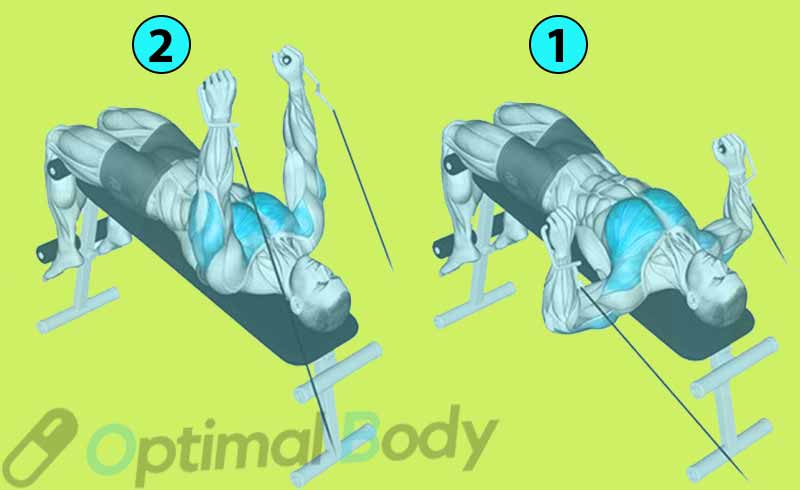
- Secure handles to low pulleys on the cable machine.
- Position a decline bench between the pulleys.
- Lie on the decline bench, anchoring your feet under the footpads. Using an overhand grip, grasp the handles slightly wider than shoulder width apart.
- Inhale as you lower the handles toward your chest in a controlled manner. Keep your elbows just below shoulder level to emphasize the lower chest muscles.
- Exhale as you push the handles away from your body, fully extending your arms. At the top of the movement, squeeze your chest muscles.
- Reverse the motion slowly, bringing the handles back to your chest while inhaling.
- Execute the desired number of reps while maintaining a good form.
Elevate your cable decline press exercise with these expert tips:
- Prioritize Warm-Up: Give your muscles a thorough warm up to prevent injury and prepare them for the challenge ahead.
- Mind-Muscle Connection: Concentrate on the mind-muscle connection by mentally focusing on the muscles you’re engaging during each rep.
- Try Progressive Overload: Gradually increase the weight to continuously challenge your muscles and promote steady growth.
- Master Your Breathing: Breathe in during the lowering phase and exhale while lifting for enhanced control and power.
- Dabble in Variation: Experiment with different grip widths and angles to target various areas of your chest and enhance overall symmetry.
- Respect Recovery Time: Allow ample rest between sets and prioritize post-workout recovery for optimal outcomes.
Variations and Alternates to the Decline Cable Bench Presses
1. Dumbbell Decline Press:
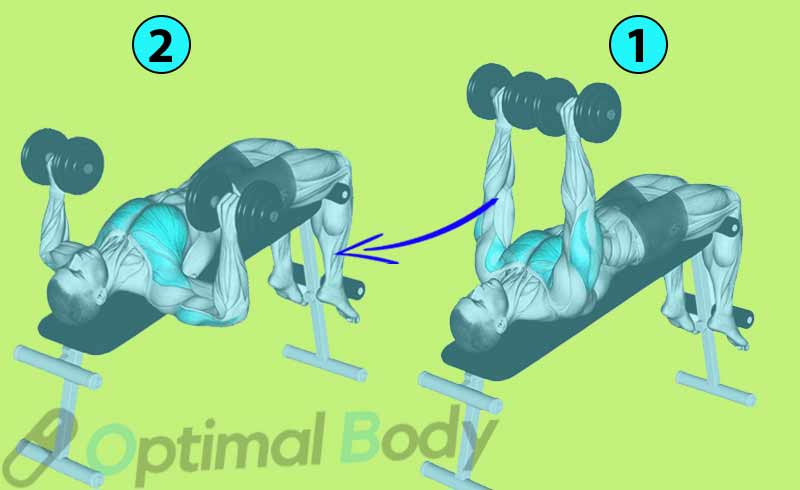
Swap cable machines for dumbbells to challenge your stability even more.
This variation demands greater control and coordination, engaging additional stabilizing muscles for a heavy workout.
2. Barbell Decline Press:
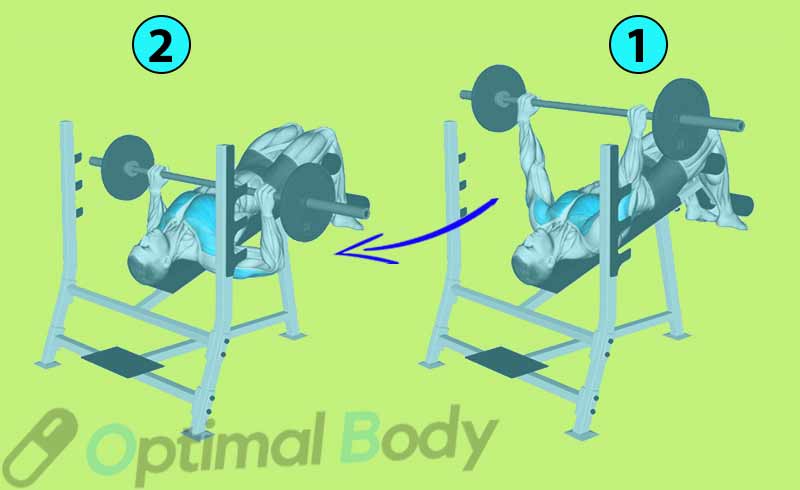
This variation offers a fresh angle of engagement and can contribute to balanced chest development.
3. Smith Machine Decline Press:
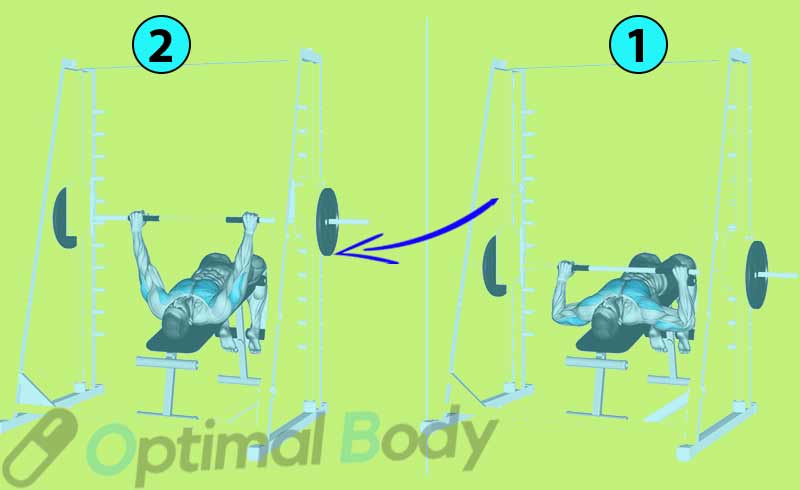
If you’re new to the Decline Presses, the Smith machine variation provides extra support and control. This can be particularly useful for beginners learning the movement.
Frequently Asked Questions (FAQs)
Is the Decline Cable Chest Press suitable for beginners?
Beginners can incorporate the exercise, but I recommend first mastering fundamental chest exercises before attempting the Decline Cable Press.
How does the Decline Cable Chest Press differ from the flat bench press?
While the flat bench press engages the entire chest, the Decline Cable Press specifically targets the lower chest muscles.
Can I substitute cable machines with dumbbells?
While possible, cable machines provide consistent tension throughout the movement, offering unique benefits.
What’s the optimal rep range for muscle gain?
Aim for 8-12 repetitions per set to efficiently stimulate muscular growth
Is it better to prioritize heavy lifting or perfect form?
The correct form should always take precedence. Gradually increase weight while maintaining impeccable form for best results.
Can women benefit from the Decline Cable Press?
Absolutely! This exercise is effective for both genders seeking upper body strength and aesthetic enhancement.
In Conclusion
The Decline Cable Press stands as a versatile and potent exercise to transform your upper body.
References:
- Plotkin, D., Coleman, M., Van Every, D., Maldonado, J., Oberlin, D., Israetel, M., Feather, J., Alto, A., Vigotsky, A. D., & Schoenfeld, B. J. (2022). Progressive overload without progressing load? The effects of load or repetition progression on muscular adaptations. PeerJ, 10, e14142. https://doi.org/10.7717/peerj.14142
- Schütz, P., Zimmer, P., Zeidler, F., Plüss, M., Oberhofer, K., List, R., & Lorenzetti, S. R. (2022). Chest Exercises: Movement and Loading of Shoulder, Elbow and Wrist Joints. Sports (Basel, Switzerland), 10(2), 19. https://doi.org/10.3390/sports10020019
- Krzysztofik, M., Matykiewicz, P., Filip-Stachnik, A., Humińska-Lisowska, K., Rzeszutko-Bełzowska, A., & Wilk, M. (2021). Range of motion of resistance exercise affects the number of performed repetitions but not a time under tension. Scientific reports, 11(1), 14847. https://doi.org/10.1038/s41598-021-94338-7
- Bench Press Calculator - April 22, 2024
- Press to Handstand: Ultimate Step-by-Step Guide - April 22, 2024
- Cable Press (How To Do, Benefits, Targeted Muscles, Alternative) - April 22, 2024

